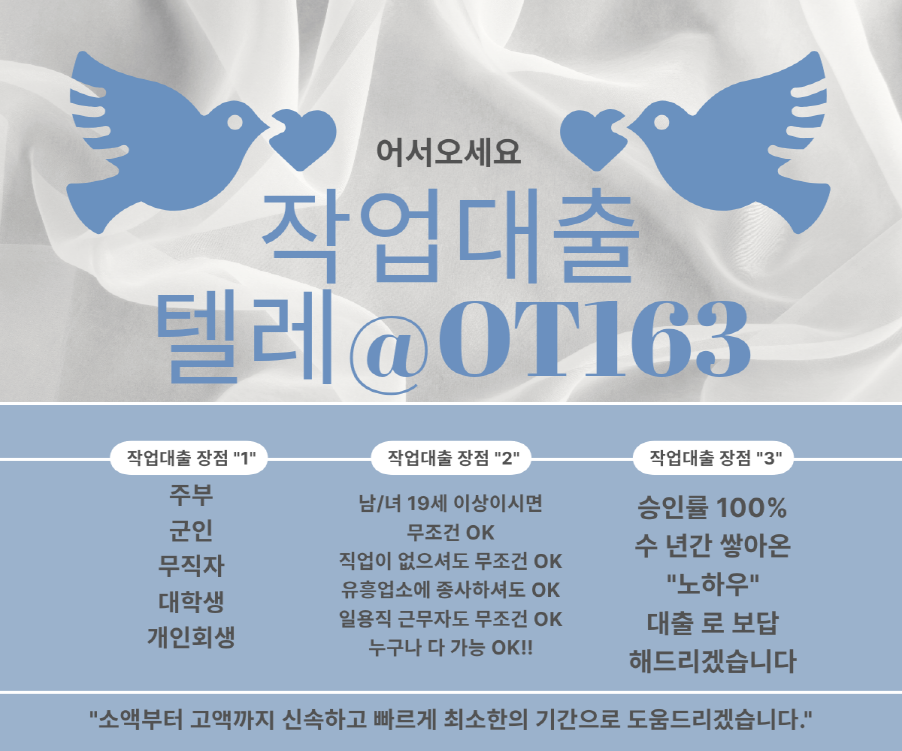작업대출업체@ 텔레OT163 작대업체 작업대출가능한곳 연체자작대❤️
페이지 정보
작성자 el4fnk 작성일25-04-30 07:29 조회15회 댓글0건관련링크
본문
작업대출업체@ 텔레OT163 작대업체 작업대출가능한곳 연체자작대❤️? 작업대출, 이제 걱정하지 마세요!
작대 성공을 위한 NO.1 작업대출 전문업체!
작업대출을 찾고 계신가요?
**[작업대출 전문 업체]**에서는 작업대출을 필요로 하는 모든 분들을 위해 최적의 솔루션을 제공합니다.
연체자, 무직자, 주부, 심지어 사업자 작업대출까지 가능한 다양한 서비스로 고객님의 상황에 맞춘 맞춤형 대출을 지원합니다.
작대성공, 이제 작대 잘하는 곳에서 도와드리겠습니다!
? 저희가 선택받는 이유
동종업계 1위의 신뢰와 전문성
작업대출 후기가 증명하는 실력
무직자 작업대출 및 연체자 작업대출도 신속하고 정확하게 처리
작대성공을 이룬 고객들이 많은 작업대출 후기가 풍부
작대 수수료를 명확하게 고지하며, 불필요한 추가 비용을 철저히 배제!
? 대출 관련 서비스
사업자 작업대출: 사업자에게도 유리한 조건으로 제공
주부 작업대출: 주부님들을 위한 빠르고 간편한 대출
무지작 작업대출: 무직자도 심사 후 대출 지원 가능
작대 후기가 가득: 고객님들의 성공적인 후기를 직접 확인하세요!
작대 성공 후기: 많은 고객님들이 이미 성공적인 대출을 경험하였습니다.
? 안전하고 투명한 대출 과정
저희 작업대출업체는 작업대출 수수료를 철저하게 투명하게 안내하며, 고객님의 정보 보호를 최우선으로 합니다. 대출 신청 절차가 간단하고, 빠르게 처리되며, 모든 작대 하는 곳에서의 어려움을 해결할 수 있습니다.
? 다양한 방법으로 언제든지 상담 가능
지금 바로 연락주세요!
여러분의 대출 고민을 해결해 드리겠습니다. 작대 성공을 경험하세요!

댓글목록
등록된 댓글이 없습니다.
